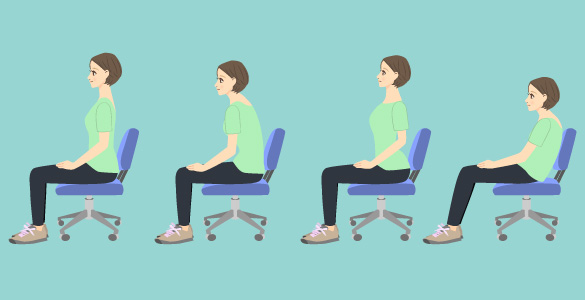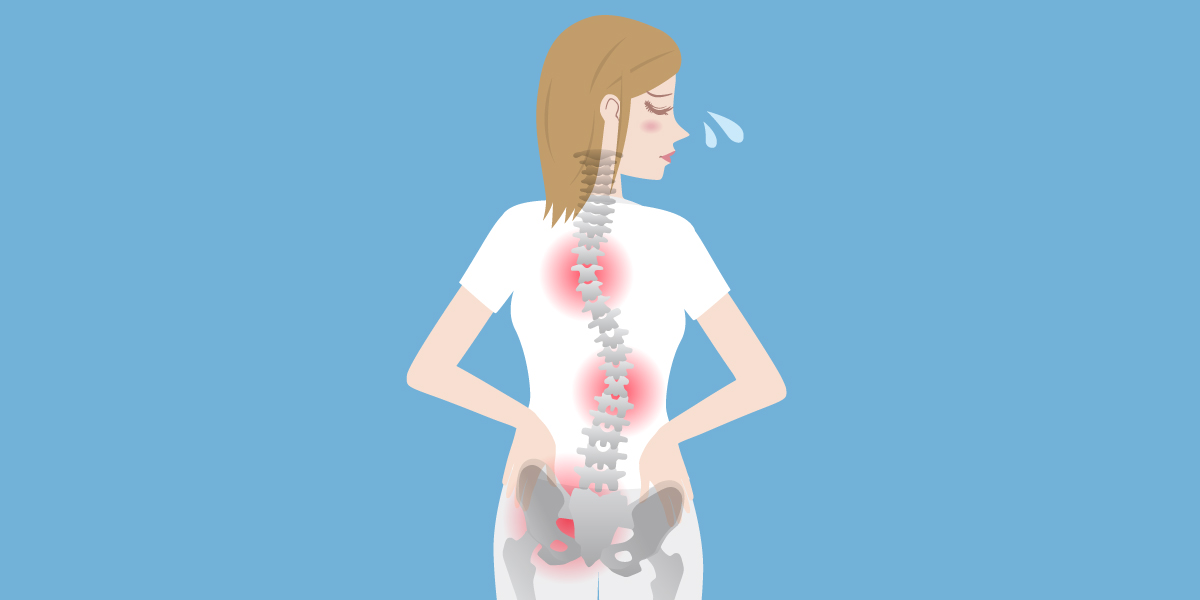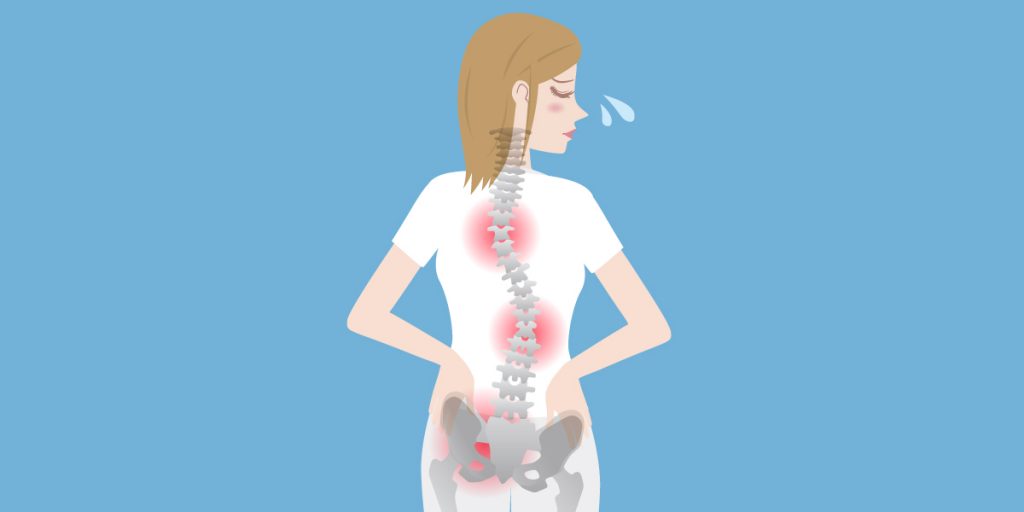Are you struggling with upper or middle back pain and looking for effective solutions to alleviate your discomfort?
Discover the most common causes of upper and middle back pain and the best physical therapy solutions to help you find relief in this informative article.
The Upper back and middle back are called the thoracic spine and is the most rigid part of the whole spine. The reason of its rigidity is to protect vital organs including the heart and lungs and Visceral organs such as, stomach, liver, intestines, and pancreas.
This part of the back runs from the neck to the top of the lower back. The upper and middle back do not get injured as frequent as the neck or the lower back. However, it can be source of pain and injury.
Anatomy
The thoracic spine has twelve bones called thoracic vertebrates. “T” stands for Thoracic. T1 articulates with the last neck bone or c7, and T12 with the first lower back bone or L1.
Discs
The Vertebrates are separated by a cushioning gell-like material called discs. These discs are shock absorber, stabilize the upper and middle back, and make the back movements smoother.
The thoracic discs are narrowed and thinner compared to the neck discs. In addition, the thinner size keeps the upper and middle back less mobile, compared with the neck discs.
Ligaments
Ligaments are bands of connective tissue. Thoracic ligaments connect bone to bone and keep the thoracic spine column in place. The ligament function is to stabilize the back during movement and limit actions outside of the normal range.
Ribs
The rib cage is formed by 12 pairs of ribs, the sternum, clavicle, and the thoracic spine. The main function of the rib cage is to protect the heart and the lungs.
Muscles
The muscles in the thoracic spine are divided in two groups; one involved in back and arms movement, and the other group of muscles are involved in the breathing.
Back and Arm Muscles
- Iliocostalis Thoracis moves the back backward and to the side.
- Longissimus Thoracis moves the back backward and to the side.
- Spinalis Thoracis arches the back or moves the back backward.
- Semispinalis Thoracis muscle arches and rotates the back.
- Multifidus muscle arches the back and minimally rotate it.
- Rotatores Thoracis (Longus brevis) helps to rotate the appropriated thoracic bone.
- Intertranversus muscle side bend the spine ipsilaterally.
Arms Muscles
- Pectoralis Major
- Latissimus Dorsi
- Serratus Anterior
Breathing Muscles
The Primary Muscles for breathing are:
- Diaphragm
- Sternocostal
- Intercostal
The Secondary Muscles for breathing are:
- Scalenus
- Sternocleidomastoid
- Pectoral Major
- Serratus Posterior
- Pectora Minor
Role of the Rib Cage
- Assist with the movement in the shoulder and other areas of the back.
- Decrease the risk for postural issues.
- It offers support and stability to the whole back.
Upper and Middle Back Movements
The neck is the most mobile part of the whole spine.
There are four movements that occur in this area.
Flexion
The flexion of the thoracic spine means bending forward, starting by the abdominal muscles in standing and continued by the effect of gravity. In the mean time, the back muscles control the descending of the whole body going forward.
Extension
The flexion of the Thoracic spine means bending the back backward.
Side Bending
Side bending of the thoracic spine is performed by the abdominal muscles and back extensors, and continued by the effect of gravity without leaning forward or backward.
Rotation
Pure back rotation or trunk twisting occurs in the middle thoracic area. Rotation with side bending occur in the upper and lower segments.
Breathing
The process of breathing involves two phases: Inhalation and exhalation, where air is inhale through the nose or mouth into the lungs and then released
Inspiration
The diaphragm pulls downward and contract during the inspiration. The Lower six ribs elevate, pull upward and in forward direction. The space between the chest and back increase to give more room to the lungs to expand. The thoracic cavity increases in size, and the intra-abdominal pressure increases.
A forced inspiration activates the intercostals, quadratus lumborum (pull the lower ribs down to stabilize the back and hip), scalenis, sternocleidomastoids, serratus anterior, and pectoralis.
Muscles of Inspiration
Primary Muscles:
- Diaphragm
- Intercostals
Accessory Muscles
- Scaleni
- Subclavius
- Latissimus Dorsi
- Sternocleidomastoid
- Pectoralis
- Serratus Anterior
- Trapezius
Expiration
The diaphragm relaxes and move upward. The space of the thoracic cavity decreases, the intra-abdominal pressure increases, and the lungs contract to expel air out.
Muscles of Force Expiration
Primary Muscles:
- Transversus Abdominis
- Abdominal Muscles (Rectus Abdominis, Internal and External Oblique).
- Intercostals
Accessory Muscles:
- Quadratus Lumborum
- Latissimus Dorsi
- Iliocostalis Lumborum
- Serrato Posterior
The accessory muscles are mainly used during exertion and during respiratory issues.
Longissimus Thoracis Pain Symptoms:
Pain is aggravated with:
- Movement (Pain in the Muscles, Bones, Ligaments, Tendons, and Nerves).
- Breathing (rib issues).
- Exercise or Physical Activity (Rib Condition).
- Eating or Drinking (Gastric Pain).
- Pushing and Pulling Activities (Thoracic Spine).
- Deep Breathing (Ribs)
- Overhead Movements of Arms (Ribs).
- Coughing, Sneezing (Costovertebral Joint).
Visceral Pain
Visceral pain is a pain originated from the internal organs within the chest (lungs and heart), or abdomen organs such as the liver, intestines, or pancreas. Visceral organs are very sensitive to the stretch and inflammation manifestation such as visceral pain. Pain is produced with the activation of pain receptors of the thoracic, or abdominal area. The visceral pain is described as deep, squeezing, dull, and vague.
Symptoms of Visceral Pain if is related to organs
- Nausea
- Sweating
- Pain that is Hard to Describe.
Quality of the Pain
- Stabbing, Sharp, Burning Pain (Thoracic Nerve Root).
- Achy and Hard to Describe (Visceral).
- Sudden Onset (Muscle strain, Fracture, Ligament Sprain).
- Dull Ache, Cramping feeling in Thoracic Spine (Muscle, Bone, Ligaments, or Nerves)
Longissimus Thoracic Pain Causes
Poor Posture
A bad posture alter the alignment of the back and pelvis producing:
Tilted Pelvis
Tilted pelvis is characterized by limited mobility.

- Posterior Pelvic Tilting or Shy dog is caused by excessive sitting with a slouch posture.
The posterior pelvic tilting posture is characterized by forward head posture, upper back round, lower back pull flat, The pelvic tilts backward, and the gluts tuck inwards.
Prevent Posterior Pelvic tilting by sitting at the edge of a chair, or on a wedge to tilt the pelvis forward.
- Anterior Pelvic Tilting or Happy Cow is recognized by an excessive lower back curve The hip flexor makes the back lean backward. The abdominal muscles are overstretched giving the impression of a bulged abdomen. The posterior neck muscles get shorter making the head going backward, and the shoulder are pulled forward.
Prevent anterior pelvic tilting by standing with one foot on a stool or performing cat yoga pose.
Muscle Strain
Muscle strain in the thoracic spine is characterized by limited mobility, associated with localized pain and tenderness in the same area of palpation. Pain is aggravated with passive stretching. Muscle strain may refer pain to the upper and middle back.
Scoliosis
Scoliosis is the misalignment of the spinal curve, producing muscles imbalances and a poor posture. Scoliosis can produce upper and middle back pain.
Post-Abdominal Surgery
Middle Back may hurt after having an abdominal surgery as a result of scar tissue and fascia restrictions.
Fractures
A Fracture of one of the thoracic bone can refer pain to the upper and middle back.
Mastectomy
A mastectomy can affect the upper and middle back affecting the posture, range of motion, and function.
Referred Pain
Referred pain is characterized by decreased joint mobility associated with poor posture, spinal disorders, and myofascial pain. Symptoms of dull pain include, dull and hard to describe pain that doesn’t change with movement or postural changes.
Referred pain may produce pain to the upper and middle back.
How to Assess Upper and Middle back Pain?
The Physical Therapist perform a series of tests to find out the root of the problem. The physical therapist will asks questions related to neck such as:
- When Did the Pain Start?
- Does the pain increase with breathing, sneezing or coughing?
- What Kind of Movements Make Pain Worse?
- Are The Pain Constant or Comes and Goes?
The Physical Therapist will perform a detailed assessment of the body to find physical issues related to the neck pain such as:
- Muscle Tightness
- Joint Stiffness
- Poor Posture
- Muscle Tenderness
- Muscle Weakness
- Diminished or Loss of Skin Sensation in Some Areas
Physical Therapy starts right away if one or more symptoms described above were found to quickly start the recovering process and bring the patient back to their normal activities of daily living.
In some cases, the physical therapist will refer the patient back to their primary physician if more severe problems where found and need special diagnostic testing such as X-rays or MRI.
What a Physical Therapist Can Do for You?
- Control and reduce pain to help you avoid the need for pain medication.
- Restore movement in the back starting with gentle movements of the arm, shoulder, neck and back, and progressing to stretches and a home program.
- Learn to stretch the tight muscles in the chest wall and improve flexibility
- Learn the correct exercises to speed recovery time and Improve strength.
- Reach and accomplish recovery goals in the fastest and very effective manner.
- Learn individualized programs to strengthen and stretch upper back to prevent future Injuries.
- Be able to return to activities of daily living, improve health, and well being.
Upper and Middle Back Pain Prevention
- Maintain a Good Posture at All Times.
- Use Proper Body Mechanics with Activities of Daily Living.
- Be Active. Exercise Daily.
- Restore the Strength of Abdominal Muscles, Muscles Around the Back, Shoulder, Hips and Pelvis.
- Sit Less. Stretch More.
Back Stretches Everyone Should Do (Perfect for Office Jobs)
This sequence release tension in the upper back, middle back, neck, and shoulders.
It can be performed seated on a chair or standing during a quick rest break at work.
Interlock hands Stretch
- 1. Behind your back and feel the stretch on the chest and arms. Maintain upright posture.
- 2. Over your head, making yourself taller and feeling the stretch even in your tummy.
- 3. In front and imaging, you are hugging a big bear. Stretch is held for 10 seconds and is repeated 10 times.



